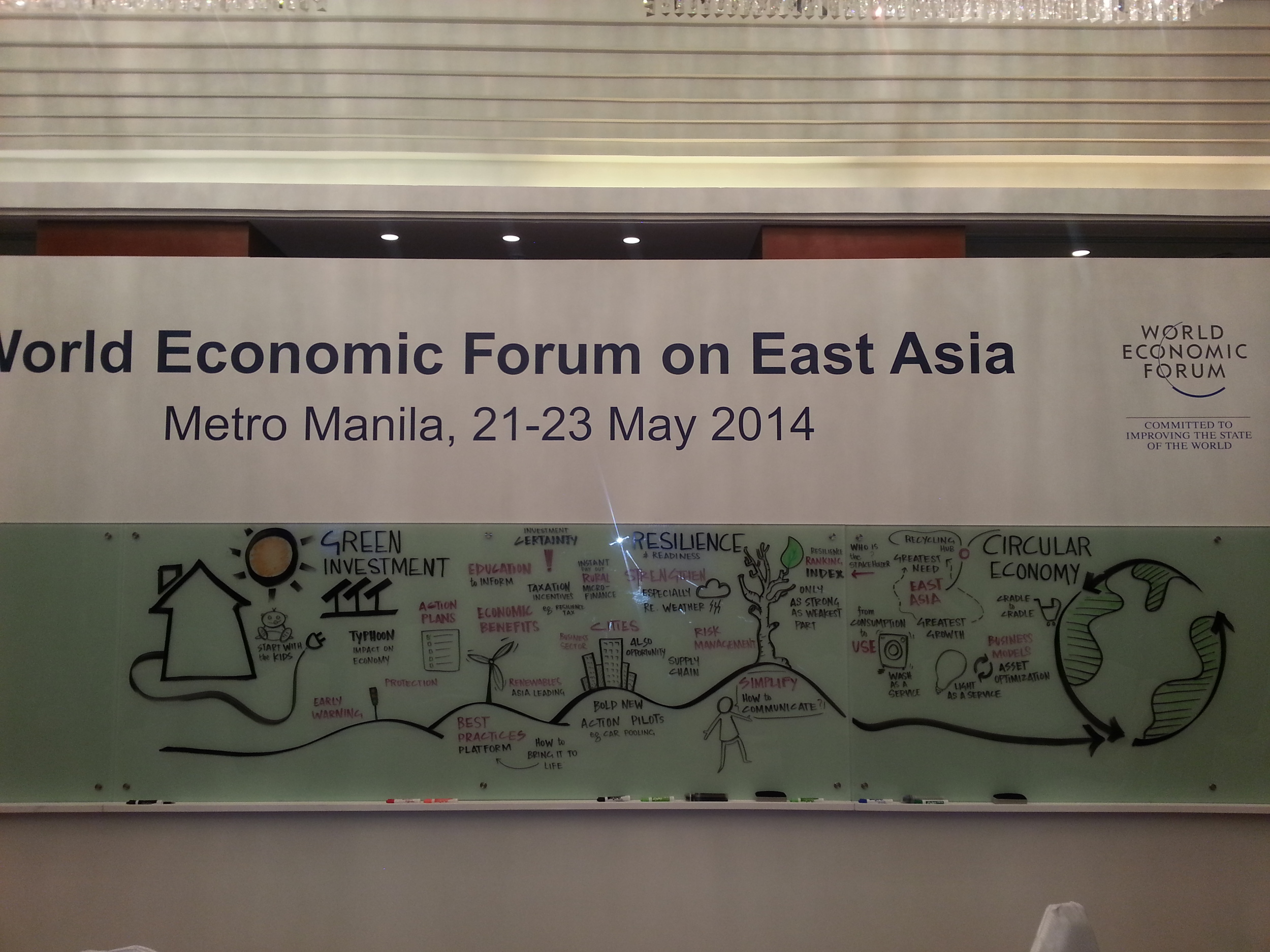Community supply chains: resilience through insurance innovation
Community supply chains: resilience through insurance innovation  At last week’s World Economic Forum in Manila, every presentation I heard mentioned the devastation of Typhoon Haiyan (aka Yolanda). A special session on decision tools for preparing for climate and natural disaster offered the chance for a panel of insurance brokerage executives, a Philippine Senator, a representative from the world’s most engaged foundation on climate resilience and a senior executive at the International Red Cross to develop an innovation – one salient project – to save the world.
At last week’s World Economic Forum in Manila, every presentation I heard mentioned the devastation of Typhoon Haiyan (aka Yolanda). A special session on decision tools for preparing for climate and natural disaster offered the chance for a panel of insurance brokerage executives, a Philippine Senator, a representative from the world’s most engaged foundation on climate resilience and a senior executive at the International Red Cross to develop an innovation – one salient project – to save the world.
Specifically, we looked at ways to avoid a breakdown in community supply chains when a major disruption occurs. This was of special interest to the Senator since after the typhoon, no goods were available for weeks after the storm at the sari sari store, the grocery store or warehouses. And when the government and development agencies brought in relief materials, this forced out local sellers with goods to sell at legitimate prices. A black market in relief goods emerged, although in a limited way, it turns out.
With this backdrop, we pondered what sort of mechanism could help solve for these issues in future crisis. Here is what we devised: community-based, parametric-triggered insurance. Talk about jargon. WEF participants roared at that winning title – but we surprised them with functional ideas, which envisioned that starting now, in risk-prone communities:
- Create a method for community payment into an insurance fund.
- Ensure that all members pay in their portion, and price the payment equitably.
- Ensure financial contact information for all participants.
- Index levels and types of events that could trigger loss.
- Pay out to all insurance holders immediately, regardless of proven loss from a disaster.
This idea isn’t brand new. I am aware of drought-triggered parametric insurance for Ethiopian farmers, for instance. But it is novel enough that most of us needed a guide to its distinction from indemnity insurance, which requires proof of harm before payout (a time-consuming process).
A lot of what ifs and issues aren’t addressed here, such as:
- How to determine the level of storm event.
- How to collect the insurance payment in cases where community members aren’t bankable.
- How to ensure that all or most buy in, particularly in more urban areas where the “street-level bureaucracy” of rural communities is weak or non-existent.
Still, I bet this type of mechanism will grow in popularity and positive impact for natural disasters, and put my vote behind it as a resiliency innovation worth supporting.
And since this idea is going to be around for a while, please help us think of a better title with a catch acronym that translates around the world. Fine, OK and Swift come to mind as acronyms I’d be relieved to see in my community if all of my hopes and dreams were wrapped up in my family and rural sari sari store in Tacloban, Philippines, or in any of millions of communities like it around the world.